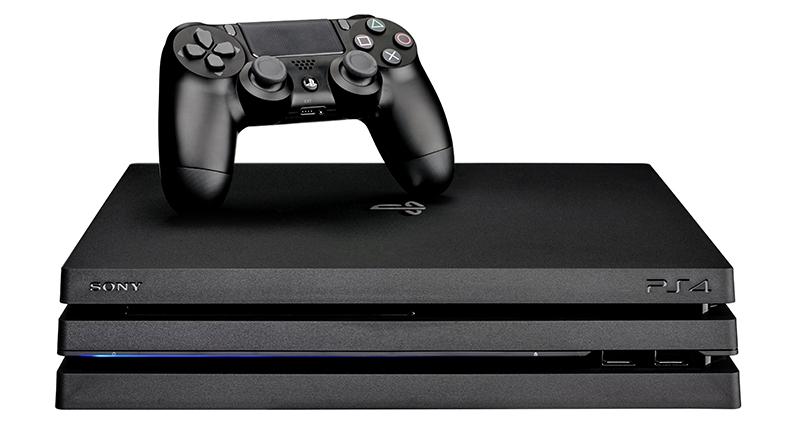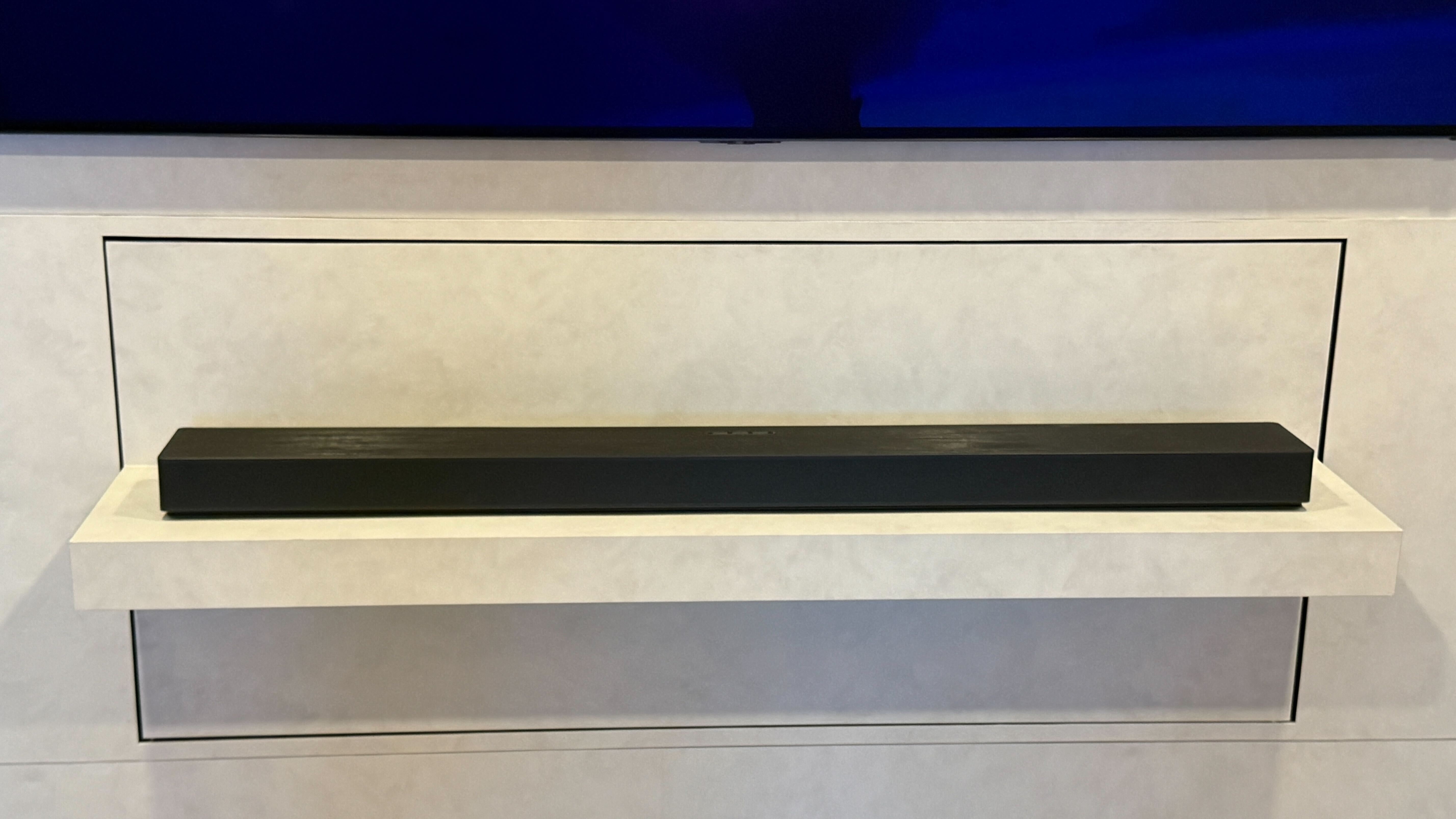What Hi-Fi? Verdict
It's arguably the best games console you can buy right now, but the PS4 Pro is not quite the all-in-one 4K player that it could be and will soon be replaced
Pros
- +
Excellent exclusive games
- +
Awesome graphical performance
- +
Strong app selection
Cons
- -
Sound could be more dynamic
- -
No 4K Blu-ray player
Why you can trust What Hi-Fi?
If your main decision on whether to upgrade from your PS4 to the PS4 Pro is based on whether it will make your video games look better, then good news – it does.
However, those wanting to use the PS4 Pro as a one-stop shop to 4K and HDR video may want to look elsewhere.
The PS4 Pro is a step in the right direction, but there are still improvements to be made. We’d expect any cutting edge video product to support 4K and High Dynamic Range (HDR), and the PS4 Pro does – but only up to a point.
While various 4K and HDR improvements have been made to video game replay, not every streaming app has been updated to support the functionality; Amazon Video still needs a 4K and HDR update, for example, and at this late stage in the console's life-cycle, it seems unlikely it will ever appear.
MORE: PS5 price and pre-orders: how much will the PlayStation 5 cost?
Features
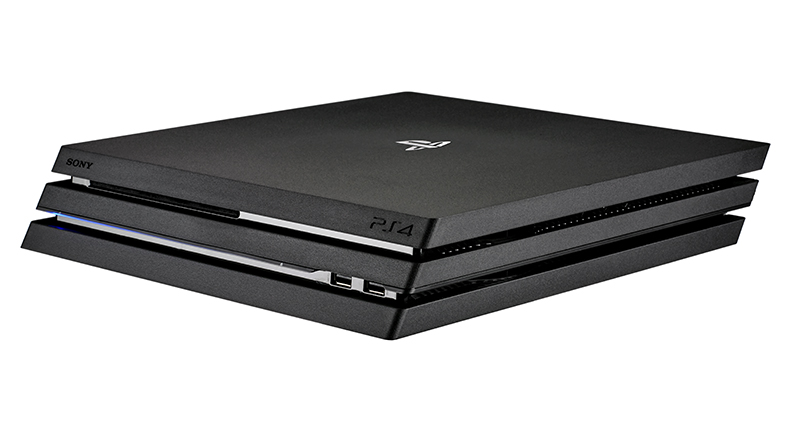
Sony has also taken the controversial decision to not give the PS4 Pro a 4K Blu-ray drive and, thanks to what the company believes is a trend towards video streaming, it won’t get one any time soon.
Whatever the reasoning, Sony’s decision limits how 4K content can be played, meaning that the PS4 Pro falls behind its main rival the Xbox One X, which does play 4K Blu-ray discs. What's more, Sony's argument that a 4K Blu-ray drive is surplus to requirements is rather undone by the fact that the upcoming PS5 will be able to play them (as will the Xbox Series X).
The latest hi-fi, home cinema and tech news, reviews, buying advice and deals, direct to your inbox.
Whatever the reasoning, for those with a poor internet connection, or who have already amassed a library of 4K Blu-ray discs, the PS4 Pro is unlikely to be the go-to player.
On the audio side, the PS4 Pro is more complex than expected, too.
Changing the default decoder for games soundtracks is in the main settings menu, while the setting for films is in a separate audio menu found when you press the controller’s Options button while watching a Blu-ray.
It’s something to note when setting your console up, as you’ll need to change it to set your sound from the standard PCM to bitstreaming Dolby Digital or DTS. The PS4 Pro also only supports Dolby Atmos for compatible Blu-ray movies, it does not support Atmos for games.
MORE: Sony PS5: everything you need to know
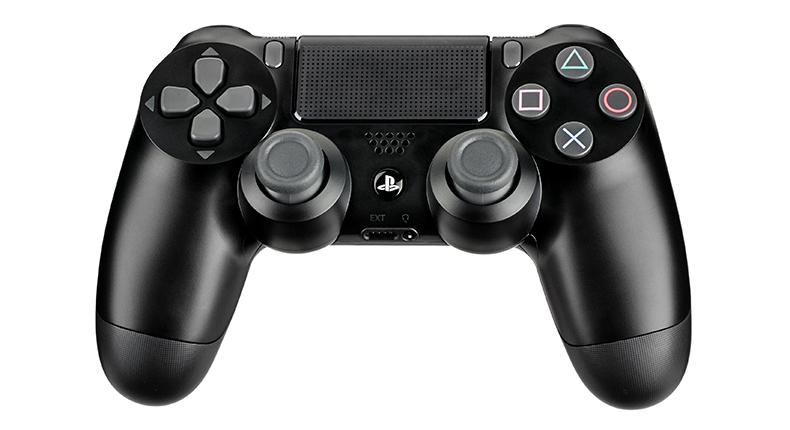
On the whole, though, making it through the PS4 Pro’s menus is a lot easier than on the Xbox One S or One X.
The screen layout is identical to that on the standard PS4, with icons ordered horizontally along the screen, and content divided into vertical subsections. Even first time users are unlikely to get lost in this console’s navigation screens.
It’s not perfect; you are unable to move icons about, so don’t have the same level of customisation as you get with Microsoft’s design.
And while Sony has updated the UI so you can place icons into folders – useful if you want to put your games in one place – you can’t move apps placed into folders by default.
MORE: Dolby Atmos – What is it? How can you get it?
Build
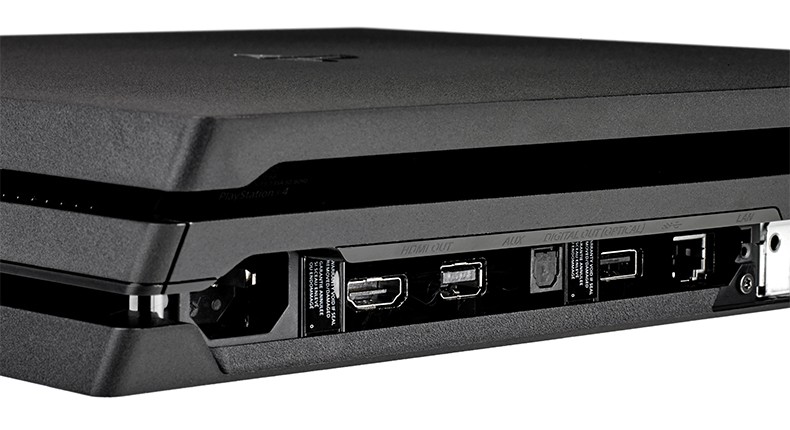
While the Xbox One X is slimmer than its predecessor, the PS4 Pro is a little bigger than the original, measuring a few centimetres longer and wider than the standard PS4. It’s also a little heavier, at 3.3kg.
Sony has also made changes to the button layout, replacing the touch sensitive buttons with mechanical ones, and has moved the light bar from the top of the console to the front.
These do make it feel easier to use than the original PS4 – a little physical click goes a long way. Like the PS4, you can choose to lie the Pro horizontally, or place it upright on its stand, available for an optional £20 extra. Do be aware, though, that the console tends to run hotter - and therefore louder - when used in its horizontal orientation.
MORE: PlayStation 4 review
Performance
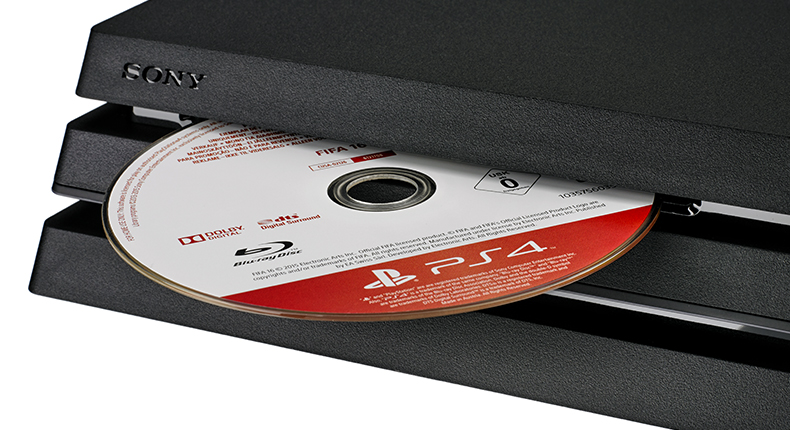
The PS4 Pro has a noticeably crisp Blu-ray picture to it.
The folds and creases in the uniform of a young Alan Turing in The Imitation Game are clearly visible, and there’s enough detail in the facial expressions of Benedict Cumberbatch’s pseudo-emotionless portrayal of the mathematician – furrowed brows when encountering a problem, and distinct anger when things don’t go his way - to lend believability to the role.
The colours are pleasingly rich too; the opening scene of the monster-movie Pacific Rim when the first kaiju break San Francisco’s Golden Gate Bridge, looks bold and bright.
That doesn’t change when panning across a landscape or when the camera moves underwater for the first robot versus monster battle.
For PS4 games, the Sony’s upscaler is impressive, and you could be fooled into thinking that Full HD games are actually 4K.
The Pro has a unique method of tracking objects, called an ID buffer, which can more accurately account for the location of edges of in-game objects.
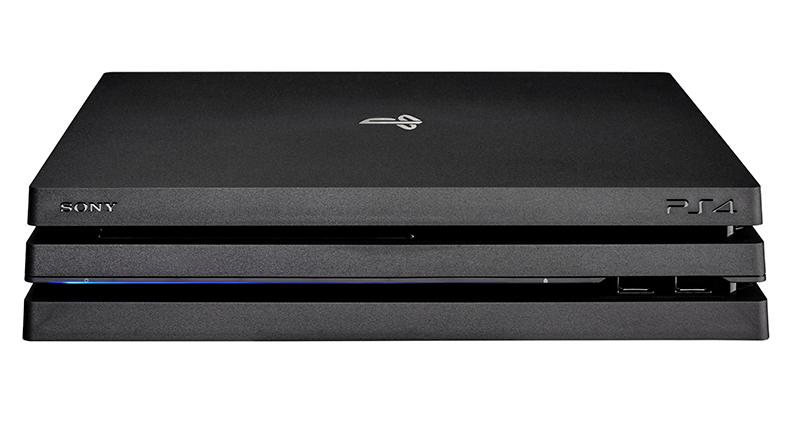
The PS4 Pro also employs checkerboard rendering, which makes the edges of images crisper and the textures more detailed in comparison to standard geometric rendering.
Where developers have optimised existing 1080p video games, the result is much better defined graphics.
You will need a 4K television to notice these improvements. Playing Uncharted 4: A Thief's End – one of the many games now optimised for the PS4 Pro – while connected to a 1080p projector, the optimisation isn't obvious.
However, comparing a standard PS4 and PS4 Pro on a 4K HDR television, the greater detail in the environments of the optimised game on the PS4 Pro is clear, and it runs noticeably smoother too.
The PS4 Pro can play 4K games without a 4K player, because video game discs are distinct from Blu-rays.
When you insert a 4K game, the data on the disc is combined with information downloaded from the internet, which makes playing it in 4K resolution possible.
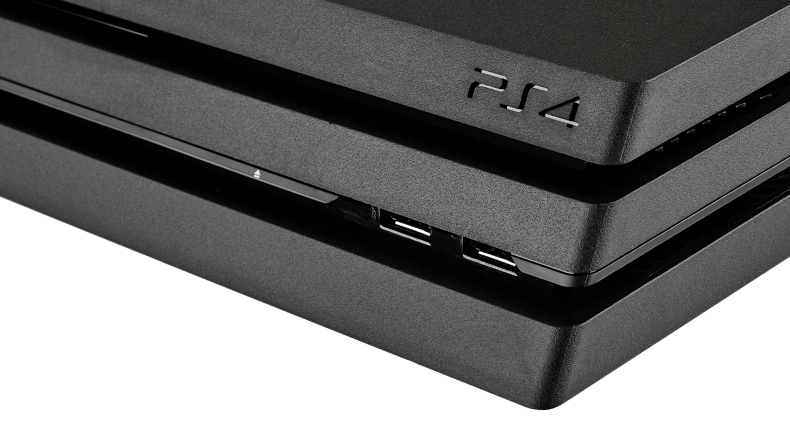
But compared to the Sony UHP-H1 Blu-ray player, which was £30 cheaper than the PS4 Pro at the time of testing, the console doesn’t have the same sense of subtlety in its colours as the dedicated player.
While this is to be expected – the PS4 Pro is primarily a games machine, after all – it is a factor.
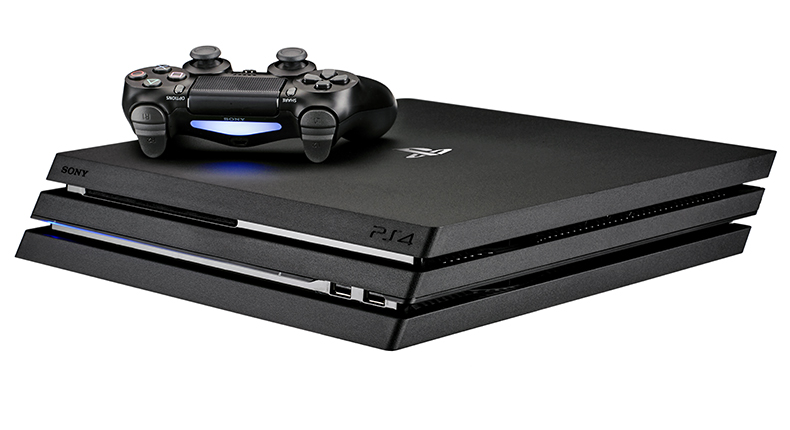
We connect the console to our reference Denon AVC-X6500H amp and discover that the PS4 Pro organises its audio well. Play Man of Steel on Blu-ray and there’s a clear distinction between the whirring of the helicopter, amidst the explosions of the collapsing oil tanker.
The bass booms are responsive and weighty, which is satisfying when playing high octane video games such as Infamous: First Light. Performing combat moves, such as the ‘neon singularity’, is executed with an enjoyable thwack.
The midrange is clear too, delivering dialogue without sounding congested or thick, whether you’re listening to music, watching a film or playing a game.
However, the UHP-H1 Blu-ray player delivers a more dramatic and dynamic sound overall. The kaiju roars in Pacific Rim are much more powerful, and convey the sense of scale to these city-destroying beasts.
There’s also a bit more refinement in the sound as well – the whirring of Gypsy Danger as it raises its arms in the first kaiju fight has as a more mechanical sound to it that isn’t quite as obvious on the PS4 Pro.
Verdict
For first time console-buyers or gamers wanting to upgrade from the PS4, the PS4 Pro is a solid choice. Do note that the PlayStation 5 is on the horizon, however, so spending a significant amount of money on a PS4 Pro upgrade now might be unwise.
Games have potentially more detail on the Pro compared to the standard PS4, making good use of the 4K and HDR updates. Menus remain smooth to navigate, and the picture when watching video is crisp and rich – in comparison to the Xbox One S, this is the better choice in many ways.
However, if you’re looking for a way to integrate 4K and HDR into your home cinema setup, the PS4 Pro isn’t the best way.
Not all of its streaming apps are as good as they need to be, even after all this time, and the lack of 4K Blu-ray playback means the console isn’t future-proof.
Our advice at this point is to wait for the PS5 and Xbox Series X: even if you don't want or can't afford one of those brand new consoles, their arrivals will also see shops flooded with discounted PS4s and Xbox Ones.
MORE:
PS5: everything you need to know
Xbox Series X: everything you need to know
What Hi-Fi?, founded in 1976, is the world's leading independent guide to buying and owning hi-fi and home entertainment products. Our comprehensive tests help you buy the very best for your money, with our advice sections giving you step-by-step information on how to get even more from your music and movies. Everything is tested by our dedicated team of in-house reviewers in our custom-built test rooms in London, Reading and Bath. Our coveted five-star rating and Awards are recognised all over the world as the ultimate seal of approval, so you can buy with absolute confidence.
